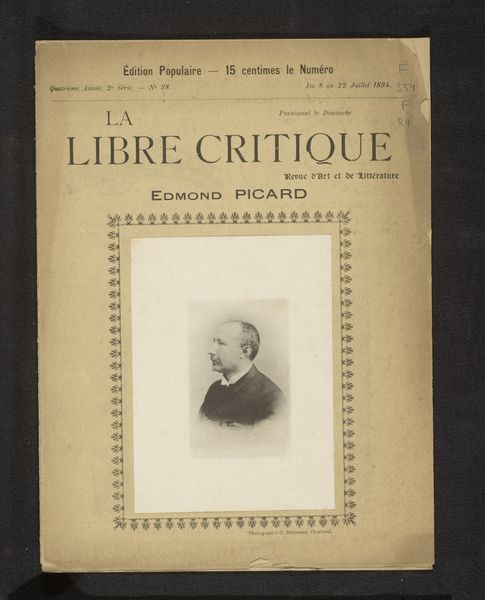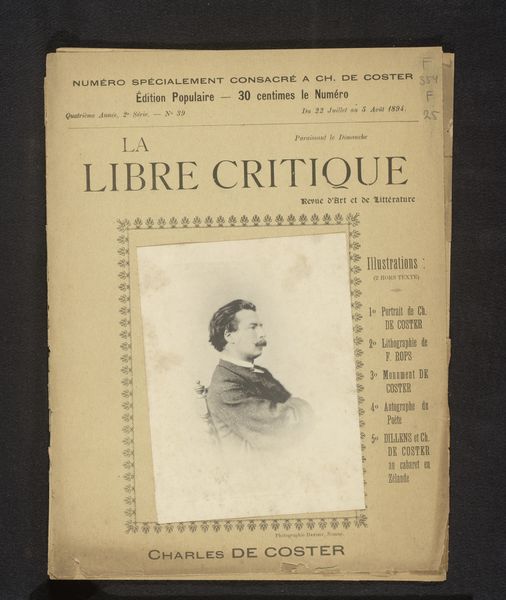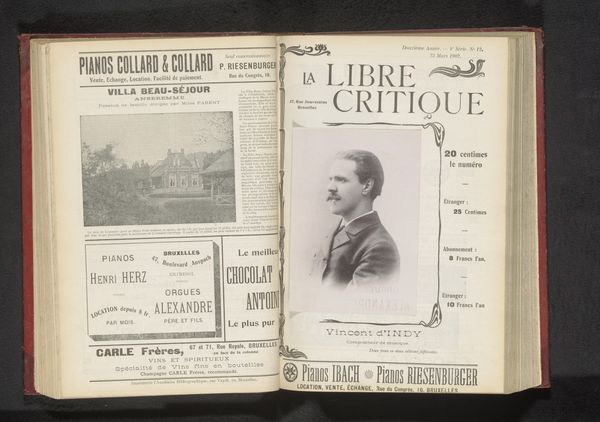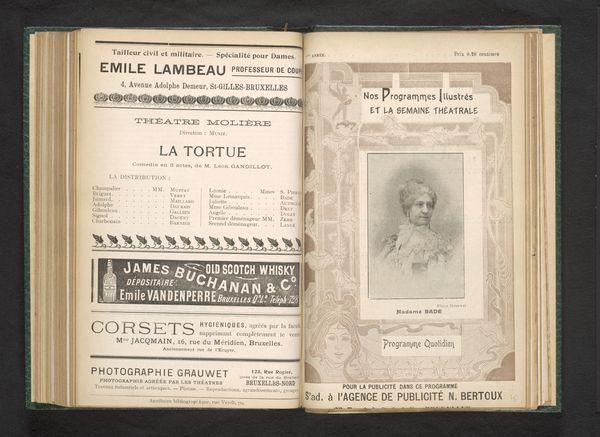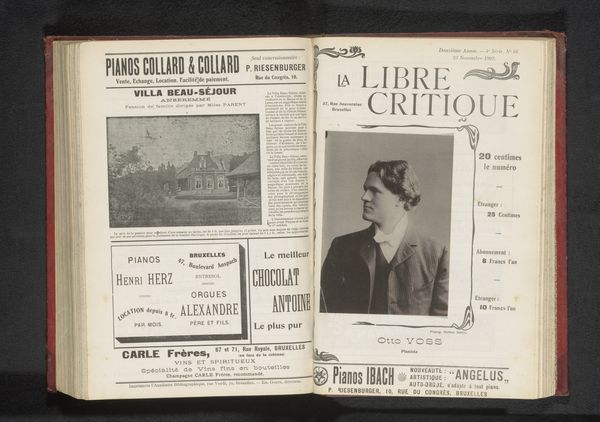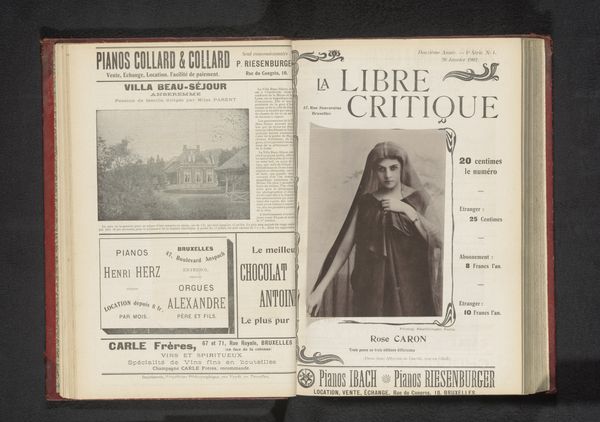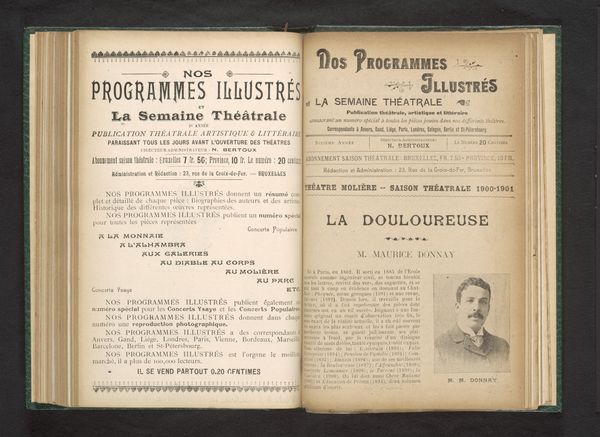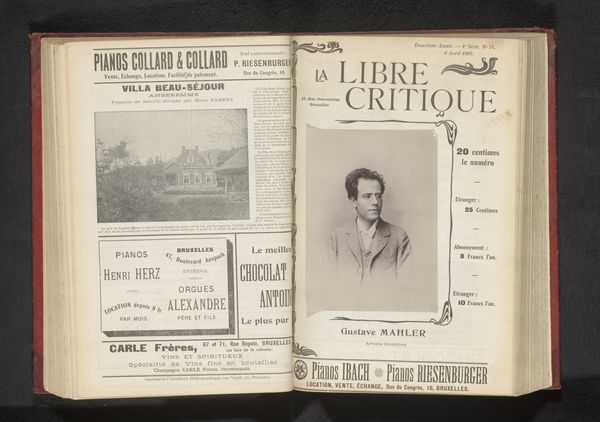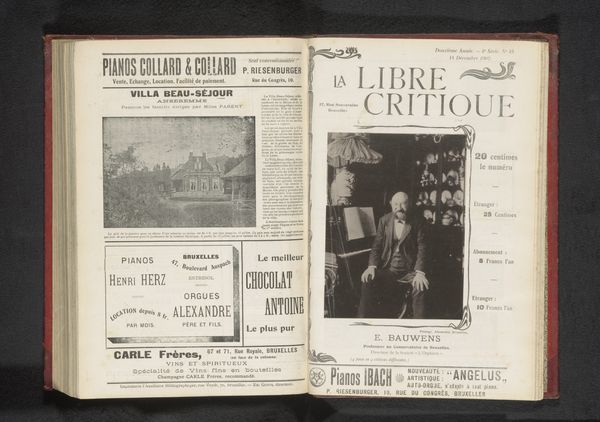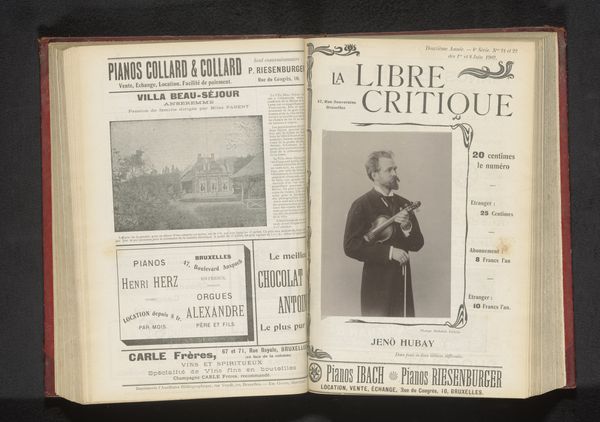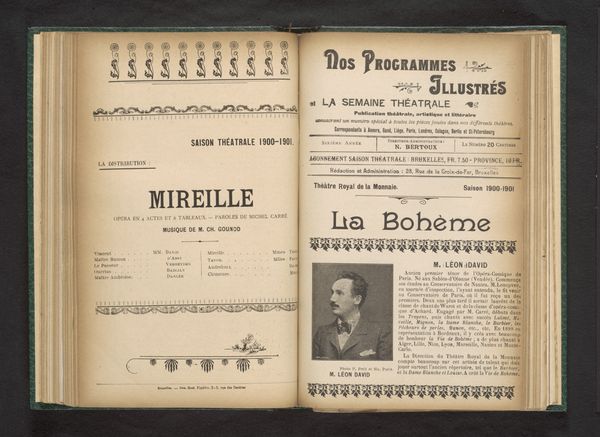
#
aged paper
#
homemade paper
#
paper non-digital material
#
paperlike
#
typeface
#
thick font
#
letter paper
#
paper medium
#
historical font
#
columned text
Dimensions: height 130 mm, width 95 mm
Copyright: Rijks Museum: Open Domain
Editor: This is a fascinating piece, a photographic print titled "Portrait of Georges Rodenbach" from before 1895 by Nadar, currently held at the Rijksmuseum. The image is on what seems to be paper of some kind. The entire print has a sort of aged and historical quality about it. What catches my eye is the framing of Rodenbach's portrait within what appears to be a page from a journal. What do you see in this work, and what can you tell me about the symbolism? Curator: Indeed. This portrait, set within what is in fact a page from “La Libre Critique,” a Belgian art and literary review, becomes an emblem. Think about the power of printed material in that era. The printed image—the photograph—conveys truth, reality, and even fame. Framing Rodenbach, a symbolist poet, within the publication itself acts as a form of consecration, doesn't it? How do you think that affects the way a contemporary viewer would interpret this image versus how we might interpret it today? Editor: I hadn't considered the act of printing the portrait to be an action imbued with power and consecration. Today, it may be less revolutionary because everything and everyone is captured in media. Knowing the magazine itself immortalizes Rodenbach is enlightening. How interesting that such seemingly common practices are really imbued with such great value. Curator: Precisely. Think also about what Rodenbach himself symbolized: melancholy, the fading of beauty, the introspective gaze. The typeface surrounding the portrait, the very layout of the page, all contribute to the feeling of a specific era, a cultural mood we now recognize and perhaps even romanticize. It’s about visual language, isn’t it? Each component is an echo of cultural memory.
Comments
No comments
Be the first to comment and join the conversation on the ultimate creative platform.
